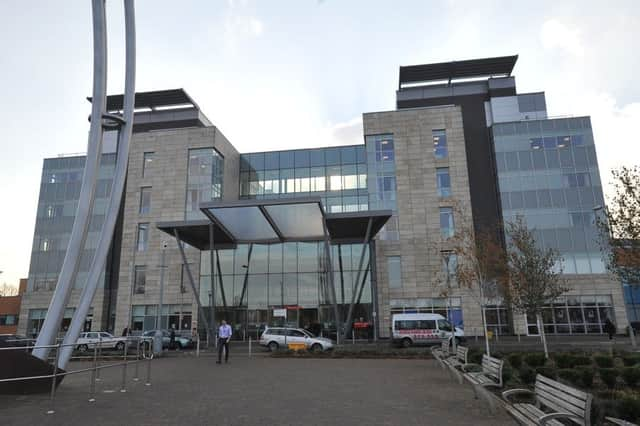£39m deficit for trust which runs Peterborough City Hospital


The North West Anglia NHS Foundation Trust also saw just 73.64 per cent of emergency patients admitted, transferred or discharged within four hours in the last three months of 2017/18 - well below the target of at least 95 per cent.
However, all waiting times for cancer treatment during the same period were met.
Advertisement
Hide AdAdvertisement
Hide AdThe trust’s deficit in 2016/17 was £17.7 million when it ran just Peterborough City and Stamford hospitals.
The 2017/18 deficit of £38.9 million was £3.4 million less than had been expected by the trust and follows a merger with Hinchingbrooke Hospital.
Peterborough City Hospital has had large annual deficits due to Private Finance Initiative (PFI) payments.
The trust has previously called this winter’s pressures an “unprecedented strain” with an increased number of admissions and delayed handing over of patients from ambulances.
Advertisement
Hide AdAdvertisement
Hide AdCaroline Walker, deputy chief executive and director of finance at North West Anglia NHS Foundation Trust, said: “Throughout quarter four (January – March) we have seen unprecedented numbers of patients in our Emergency Departments at both Hinchingbrooke and Peterborough City Hospital.
“This caused an increase in waiting times during peak periods which has resulted in us being unable to meet our A&E target.
“Our staff coped tremendously well with this and continued to treat patients as quickly as possible with the high standard of care that we expect.”
The difficulties faced by the trust are mirrored nationally, according to NHS Improvement, with the combined deficit for NHS trusts adding up to £960 million at the end of 2017/18 - £464 million above what was anticipated by trusts at the start of the year.
Advertisement
Hide AdAdvertisement
Hide AdHowever, the number of NHS trusts in deficit fell to 102 in 2017/18, down from 105 in 2016/17 and 157 in 2015/16.
More than 5.87 million people went to A&E in January, February and March 2018 – an increase of more than 220,000 in the same period last year.
In total, 88.4 per cent of patients were seen within four hours in A&E, compared to 89.1 per cent the year before.
At the end of the year, the sector was faced with 92,694 staff vacancies – which equates to an eight per cent vacancy rate.
But £527 million (18 per cent) less was spent filling shifts from expensive agencies compared to the previous year.